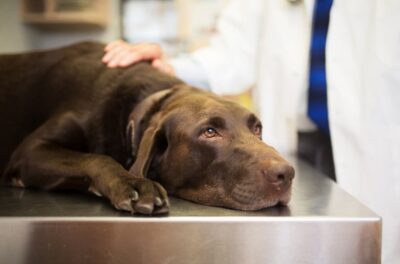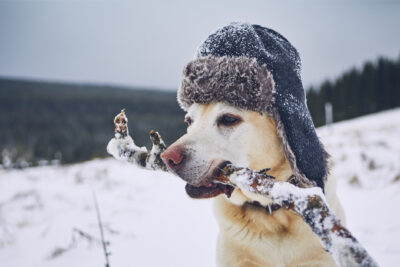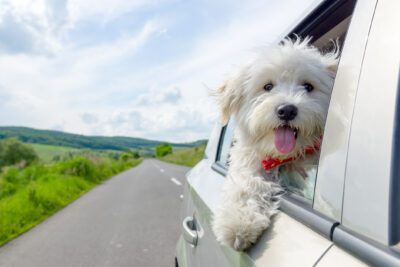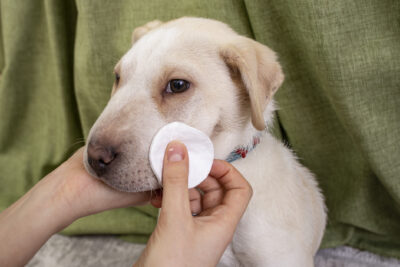10 Best Exercises for Dog Weight Loss

All featured products are chosen at the discretion of the GreatPetCare editorial team and do not reflect a direct endorsement by the author or reviewer.
Dog obesity is on the rise in the U.S. and across the world. A 2022 study found that more than half (59 percent) of dogs in the United States are considered overweight or obese (1).
In dogs, obesity is not a cosmetic issue—it results in decreased quality of life for pets and it can lead to a breakdown of the human-animal bond. In fact, being overweight or obese is so harmful to dogs that nearly one-quarter of all claims submitted to one of the largest pet insurance companies were for obesity-related illnesses (2).
A study, now over 20 years old and repeatedly confirmed, found that lean dogs live longer (3). And they live better—less arthritis and fewer mobility issues as they age. Research has continued to show the advantages of lean body condition in dogs, including healing from illness or surgery, response to medications, and even health of the gut microflora.
We know maintaining a healthy weight is important for our dogs, but how can we get them there safely? Can exercise help a dog lose weight? The best way to achieve weight loss in dogs is through a combination of moderated calorie intake and appropriate, consistent exercise.
Ready to get moving? We’ve rounded up some of the best types of exercise for dog weight loss.
10 Best Exercises for Weight Loss in Dogs
When choosing the best exercise for dog weight loss, consider activities that you and your dog will consistently enjoy. If you dislike the dog park, for example, you are less likely to take your dog there regularly. Here are 10 simple ways to exercise your dog:
Walking

This one may seem obvious, but walking is one of the safest physical activities to start with for dogs who are overweight. Start with short walks in flat areas and slowly increase until your walks are longer and/or include hills.
Walking for exercise is different from walking for a potty break. Exercise walking might include breaks for sniffing but otherwise, keep momentum going to keep your dog’s heart rate up.
If you want to mix things up, explore different ways to keep dog walks interesting, such as going on a “buddy walk” with a furry friend and their pet parent.
If your schedule prohibits you from taking walks, maybe a dog walker can help. There are apps to connect you to professional walkers, and don’t forget about the teenager down the street who wants some spending money.
Hiking
If you enjoy hiking, there are plenty of places to explore the great outdoors with your canine companion. Always follow posted leash laws and respect your dog’s ability for difficulty and length of trail. For dogs who aren’t used to hiking, start with shorter, easier hikes and work your way up to longer and more challenging routes.
Consider the weather conditions before you go, pack plenty of water, and take breaks along the way. Be mindful of jagged, hot, or icy surfaces that can injure your dog’s paws.
Swimming

Swimming is a wonderful type of exercise for any dog, but it’s one of the best options for dogs with arthritis or heat-sensitive breeds. It is an ultra-low-impact activity: Dogs float so their joints are weightless while their muscles do all the work.
If your dog won’t go all the way into the water, walking through ankle-, knee- or hip-deep water is very strengthening, even at a slow pace. (Note: Always practice water safety around fast-moving water and watercraft.)
If you are concerned about your dog swimming in open water or prefer a more controlled environment, you can research indoor swimming pools for dogs. Depending on the facility, there might be group play or private exercise options, as well as swimming for physical therapy (more on this next).
Physical therapy
Physical therapy isn’t just for recovery from injury or surgery. It can be like hiring a personal trainer, but for your dog! A canine physical rehabilitation specialist will evaluate your dog’s movement and help them build muscle where it is needed most. The specialist can help minimize the impact of chronic injuries and allow even the oldest, least active dogs to move around more easily. In turn, this permits other types of exercise and maybe even a longer life. If your dog struggles with mobility, a joint support supplement may be a helpful addition to their physical therapy routine.
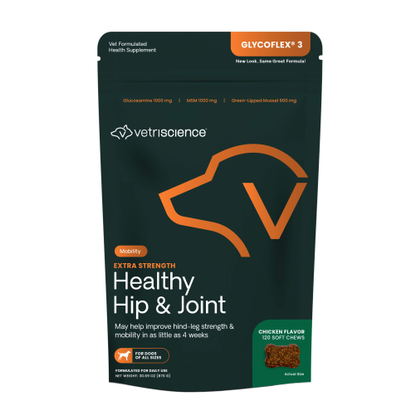


Physical therapy techniques you can use include treadmill therapy, underwater treadmill therapy, passive range-of-motion exercises, and therapeutic exercises to improve strength, balance, and coordination. Your veterinarian can recommend local physical rehabilitation centers.
Interactive playtime

It may sound simple, but all of those fun activities you used to do with your dog when they were a puppy can be reintroduced. Whether playing fetch, hide-and-seek, or tug-of-war, any form of playtime with your dog is active and can be included in a dog weight loss exercise plan. You might even find that your dog returns to playing with toys on their own after you start playing with those toys, too.
Scavenger hunt
A classic game of chase is sure to burn calories, but if you are spending time indoors or have limited space, a scavenger hunt can be a fun option to consider. Rather than hiding small treats (those calories can add up fast!), try a few rounds of “hide the toy” to provide both mental and physical stimulation. Start out by hiding a favorite toy in plain sight and telling your dog to “find it,” and then gradually work your way up to more challenging hiding spots, like under a blanket or pillow.
Dog park visit

Many dogs like dog parks because they get to be independent—they can choose where to go and which other dogs to play with. Whether your pup prefers to amble around sniffing or enjoys chasing other dogs, all of those minutes of activity add up. During the colder months, see if your area has an indoor dog park where your pet can expend some energy.
When spending time at the dog park, avoid overdoing it—too much activity or rough play can lead to injuries.
Social outing
If your dog isn’t a fan of the dog park or you find them too unpredictable, don’t underestimate the value of playtime with friends’ or neighbors’ dogs. Scheduling a play session after work a couple of times a week gives your dog a change of pace while also letting you include your dog in your own leisure activities. Whether in a private backyard or that secret dog-safe area in your neighborhood, spending time with friends can translate into easy exercise.
Classes
Enroll your dog in activity classes, such as agility training, retrieving, scent-tracking, dog diving, or whatever your dog’s genetics make them excited to do. Bonus points for practicing those skills outside of class as additional exercise. For example, if your dog really enjoys agility training, consider making a homemade agility course in your backyard as an enriching activity.
Dog daycare
Now that the dog daycare industry has exploded, busy pet parents have even more options to turn to when their schedules are jam-packed. Most daycare facilities separate dogs by size and activity level, and you can discuss dog weight loss goals with the caretakers. Adding one or two days per week gives your dog a boost of exercise while taking the burden off of you.
Dog Exercise Safety Tips

Dog weight loss should be slow. Aim for no more than 0.5 to 2 pounds of weight loss per month, depending on the size of your dog.
For dogs who are obese or have additional medical issues, it is best to consult your veterinarian before beginning a weight loss program, as prescription diets and modified exercises may be recommended.
Most importantly, know your dog’s limits. Any activity that includes your dog must be designed around their physical limitations. This is especially important with regard to weather. If your dog struggles with joint pain, consider adding a fish oil supplement to help them comfortably adjust to the increased activity. Fish oil supplements contain omega-3 fatty acids, which are anti-inflammatory. These supplements can help to reduce swelling, pain, and stiffness in joints.


Never exercise overweight dogs and short-faced dogs (e.g., French Bulldogs) when the temperature is high, because they can have difficulty breathing. Be careful of hot pavement, and conversely, protect your dog’s feet when the roads are salted during winter months.
Consult your veterinarian before trying to turn a couch potato into an Iditarod contender. Your veterinarian will be very excited to learn about your dog’s weight loss plan and will have extra insight into how to safely start an exercise program for your dog.
Exercise should build up slowly as your dog’s endurance increases. For example, multiple 10-minute walks might be best for a dog just starting out. Over the course of six months, that can increase to 30-minute walks.
Always have plenty of fresh water available for your dog during and after the activity. It is safe for a dog to have a few licks of water even during strenuous activity, but they should be given a cool-down period before having a full water bowl.
For any activity that involves other dogs, don’t push your pup. Let the dogs get to know each other slowly (like on a leash walk) before putting them together in a backyard.
Exercise isn’t just about helping your dog lose weight. It will also help your dog have more energy to love you with. And, since most exercises for dogs also include you, it will strengthen the bond you share. Plus, you may find a new hobby. After all, the best activities are the ones you can do with your dog!
References
- 2022 State of U.S. Pet Obesity Report. Association for Pet Obesity Prevention. Retrieved from https://static1.squarespace.com/static/6425ec5d33eaaa634113b2d4/t/6454f61c0cad164860799c8f/1683289630779/2022+State+of+US+Pet+Obesity+Report.pdf
- Resolve to start the new year on a healthier foot – or paw – with your pets. Nationwide. Jan 2021. Retrieved from https://news.nationwide.com/resolve-to-start-the-new-year-on-a-healthier-foot/
- Kealy, Richard D et al. “Effects of diet restriction on life span and age-related changes in dogs.” Journal of the American Veterinary Medical Association vol. 220,9 (2002): 1315-20. doi:10.2460/javma.2002.220.1315

